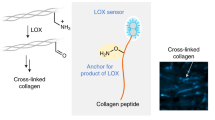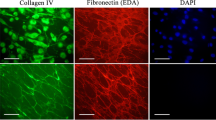Abstract
THE reaction of free carbonyl groups with N-methyl benzothiazolone hydrazone (MBTH) is a very sensitive and specific method for the quantitative determination of free aldehydes1,2. Carbonyl compounds react with 1 mole of MBTH to form an azine derivative. Azines of aldehydes react sequentially with a second mole of MBTH, oxidized by ferric ion under acid conditions, to form blue-green tetraazopentamethine cyanine dyes3. These products can be specifically identified for aldehydes by their absorption spectra2,4–6. While a variety of compounds will form azines with 1 mole of MBTH, the second stage of the reaction is specific for aldehydes and can be carried on in the presence of other carbonyl compounds. Carbohydrates having pyranose structures do not react with MBTH, nor do they interfere with the reaction of aldehydes with MBTH. The reaction is at least 100 times more sensitive than the Schiff reaction7. It differs from the periodic-acid–Schiff (PAS) reaction8 in that the MBTH reaction detects ‘natively’ free aldehydic groups while the PAS reaction uncovers the aldehydic group through oxidative reactions prior to reaction with Schiff's reagent.
This is a preview of subscription content, access via your institution
Access options
Subscribe to this journal
Receive 51 print issues and online access
$199.00 per year
only $3.90 per issue
Buy this article
- Purchase on Springer Link
- Instant access to full article PDF
Prices may be subject to local taxes which are calculated during checkout
Similar content being viewed by others
References
Sawicki, E., Hauser, T. R., Stanley, T. W., and Elbert, W., Anal. Chem., 33, 93 (1961).
Paz, M. A., Blumenfeld, O. O., Rojkind, M., Henson, E., Furfine, C., and Gallop, P. M., Arch. Biochem. Biophys., 109, 548 (1965).
Hünig, S., Balli, H., Breither, E., Brühne, F., Geiger, H., Grigot, E., Müller, F., and Quast, H., Angewandte Chemie (Internat. ed.), 1, 640 (1962).
Gallop, P. M., Biophys. J., 4, 80 (1964).
Blumenfeld, O. O., Paz, M. A., and Gallop, P. M., Fed. Proc., 22, 648 (1963).
Blumenfeld, O. O., Paz, M. A., Gallop, P. M., and Seifter, S., J. Biol. Chem., 238, 3835 (1963).
Gallop, P. M., personal communication.
McManus, J. F. A., in Connective Tissue in Health and Disease, edit. by Asboe-Hansen, G., 31 (Munksgaard, Copenhagen, 1954).
Rojkind, M., Blumenfeld, O. O., and Gallop, P. M., Biochem. Biophys. Res. Commun., 17, 320 (1964).
Author information
Authors and Affiliations
Rights and permissions
About this article
Cite this article
DAVIS, R., JANIS, R. Free Aldehydic Groups in Collagen and Other Tissue Components. Nature 210, 318–319 (1966). https://doi.org/10.1038/210318a0
Published:
Issue Date:
DOI: https://doi.org/10.1038/210318a0
This article is cited by
Comments
By submitting a comment you agree to abide by our Terms and Community Guidelines. If you find something abusive or that does not comply with our terms or guidelines please flag it as inappropriate.



